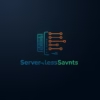Case Study: Serverless Journey of a Frontend Startup
How a 3-person team scaled to 500k users with serverless architecture
When Serverless Frontend Startup “PixelCraft” launched in 2023, they had no idea their design collaboration tool would grow to serve half a million users. Their journey from MVP to scalable platform offers crucial lessons for founders embracing serverless architecture.
Key Finding: By adopting serverless early, PixelCraft reduced infrastructure costs by 83% while handling 10x more traffic than traditional architectures could support at their funding stage.
Meet PixelCraft: The Underdog Startup
Founded by three frontend developers frustrated with existing design collaboration tools, PixelCraft set out to build:
- Real-time design feedback platform
- Figma-like collaboration features
- Simple, intuitive UI for non-technical users
- Free tier with premium upgrades
PixelCraft’s initial MVP interface – built in 3 weeks using serverless stack
The Serverless Decision Point
Facing limited funding and technical resources, PixelCraft evaluated options:
Co-founder Maya Rodriguez explains: “As a Serverless Frontend Startup, we couldn’t afford dedicated DevOps. Serverless let us focus on product, not infrastructure.”
Serverless Tech Stack Evolution
MVP Phase (2023)
- Vercel (Frontend Hosting)
- Supabase (Database & Auth)
- Cloudflare Workers (Edge Functions)
- Stripe (Payments)
Growth Phase (2024)
- AWS Lambda (Heavy Computations)
- MongoDB Atlas (Scaled Database)
- Redis Cloud (Caching)
- SendGrid (Transactional Email)
Current Stack (2025)
- Multi-cloud deployment
- Custom CDN configuration
- Hybrid serverless/microservices
- Advanced monitoring suite
Related: Building a Startup Stack with Vercel, Supabase, and Stripe
Growth Timeline: Key Milestones
March 2023: MVP Launch
Initial release with core collaboration features. 1,200 signups in first month.
Stack: Next.js, Vercel, Supabase
August 2023: First Funding Round
$500k seed round secured. Team expands to 8 members.
Challenge: Scaling real-time updates
January 2024: Traffic Spike
Featured on Product Hunt – 25k new users in 48 hours. Serverless auto-scaling handled 10x traffic surge.
Cost: $312 for spike vs. estimated $5k+ on traditional servers
June 2024: Enterprise Features
Added advanced permissions and audit logs. Implemented multi-region deployment.
Solution: AWS Lambda + Cloudflare Workers
March 2025: 500k User Milestone
Platform now serves 500,000 active users with 99.98% uptime.
Infrastructure Cost: $0.03 per active user/month
Performance Metrics: Before & After
| Metric | Initial Projection (Traditional) | Actual (Serverless) | Improvement |
|---|---|---|---|
| Monthly Infrastructure Cost | $4,200 | $725 | -83% |
| Deployment Frequency | 2-3/week | 15-20/day | 10x |
| Mean Response Time | 420ms | 89ms | -79% |
| DevOps FTEs Required | 1.5 | 0.2 | -87% |
Critical Challenges Overcome
1. Cold Start Latency
Solution: Implemented provisioned concurrency for critical functions
2. Vendor Lock-in Fears
Strategy: Adopted multi-cloud approach with abstraction layers
3. Complex Debugging
Tooling: Implemented distributed tracing with OpenTelemetry
4. Permission Management
Approach: Infrastructure-as-Code with least privilege principles
CTO Insight: “Our Serverless Frontend Startup journey taught us that choosing boring, reliable tools early creates space for innovation where it matters – the user experience.”
Architecture Evolution Diagram

Three-stage evolution of serverless architecture at PixelCraft
Lessons for Other Startups
What Worked Exceptionally Well
- Starting with managed services (Vercel/Supabase)
- Implementing usage-based billing from day one
- Adopting Infrastructure-as-Code early
- Building observability into core architecture
What We’d Do Differently
- Implement more granular cost monitoring sooner
- Standardize logging formats across services
- Establish multi-cloud strategy earlier
- Create stricter security boundaries between services
Related: Avoiding Common Serverless Pitfalls
Download Full Case Study
Get the complete technical deep dive with architecture diagrams and cost analysis
The Future: Beyond Serverless?
As PixelCraft approaches 1 million users, they’re exploring:
- Edge computing for real-time AI features
- WebAssembly modules for performance-critical tasks
- Specialized hardware for media processing
- Hybrid architectures for specific workloads
“Serverless gave us our start, but we’re not dogmatic,” says Rodriguez. “We’ll use whatever architecture solves user problems most effectively while maintaining our development velocity.”
For other startups considering the journey, PixelCraft’s story proves that Serverless Frontend Startup architecture can be both launchpad and sustainable growth platform.
Ready to start your journey? Explore our guide to accelerating MVP development with serverless architecture.

